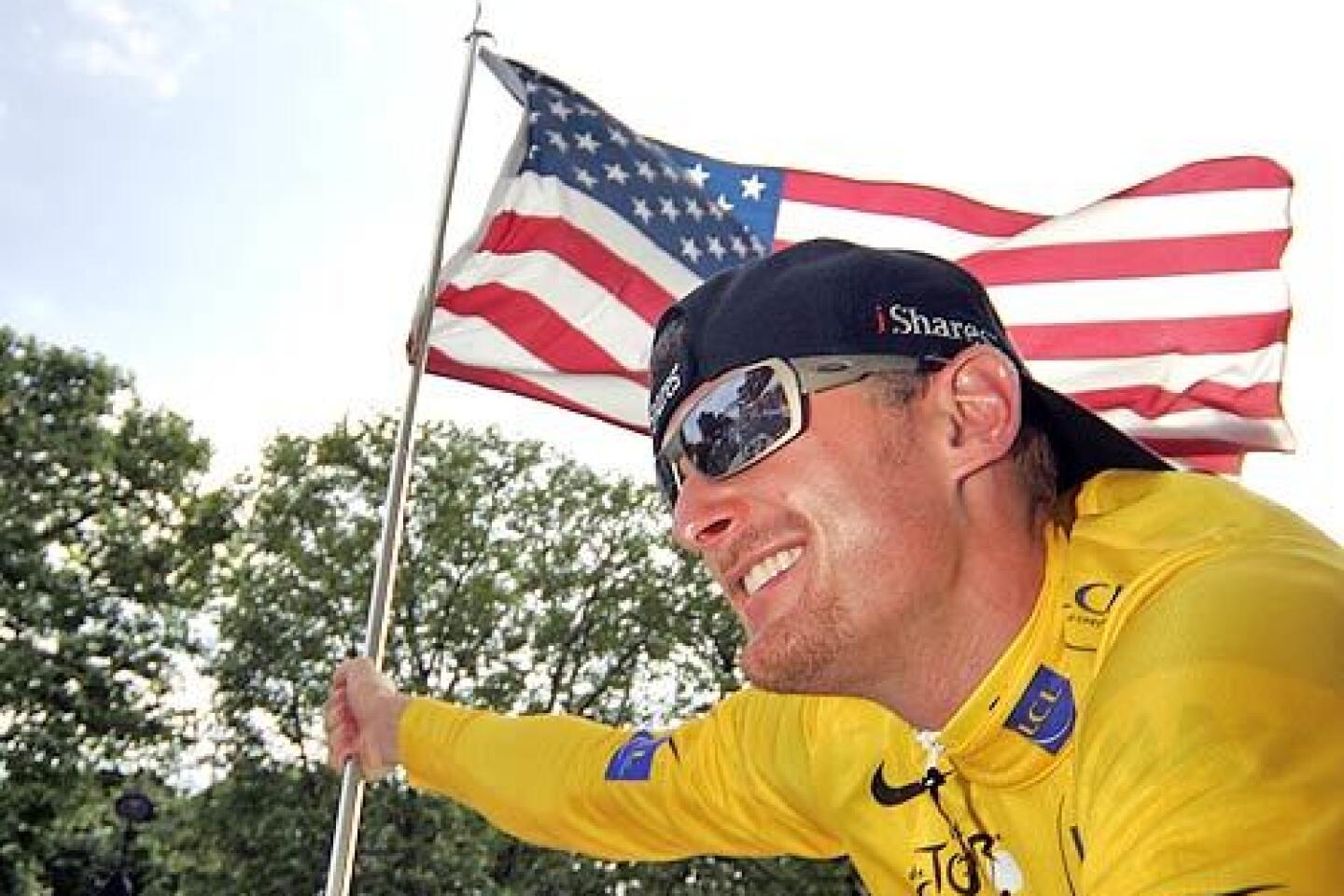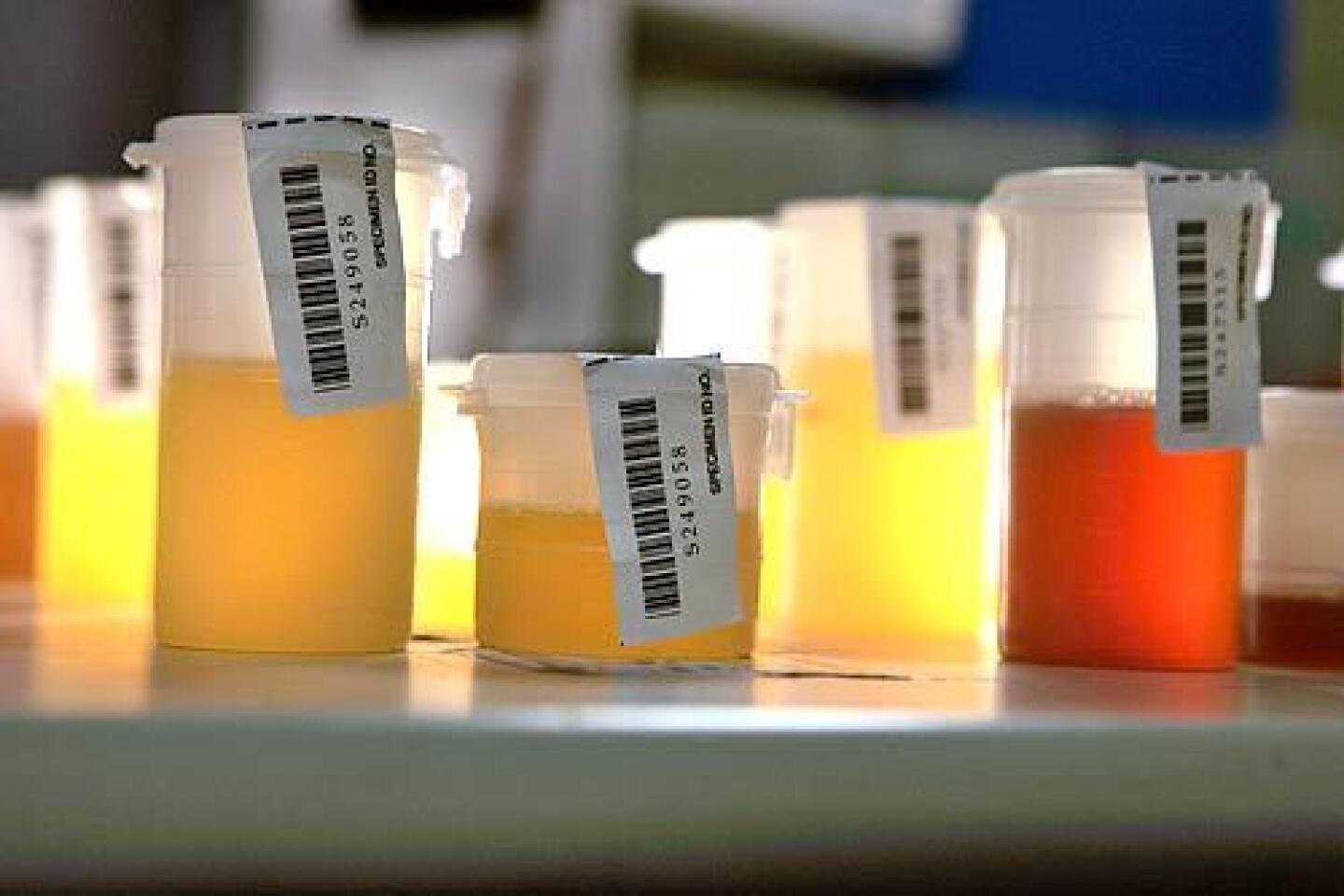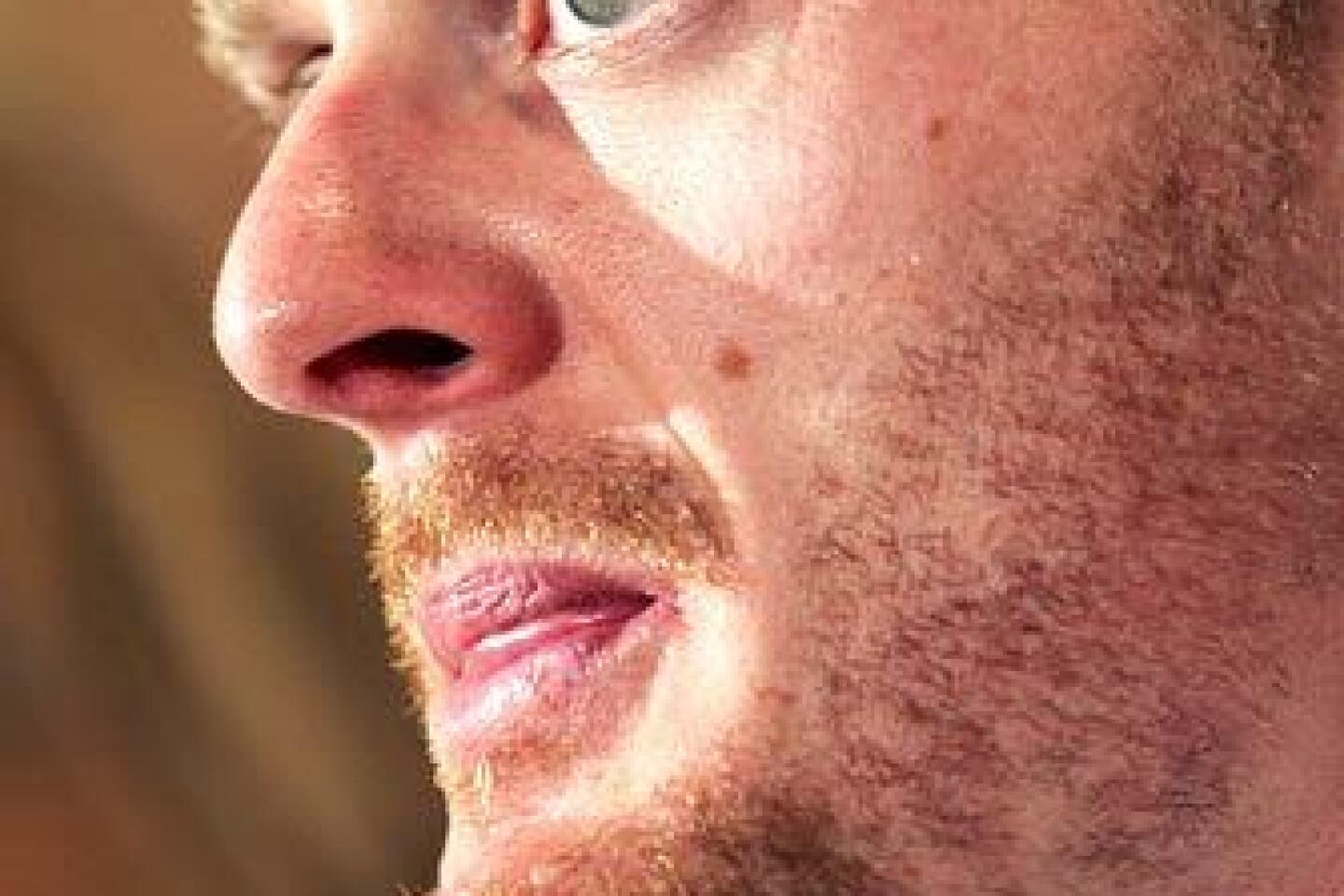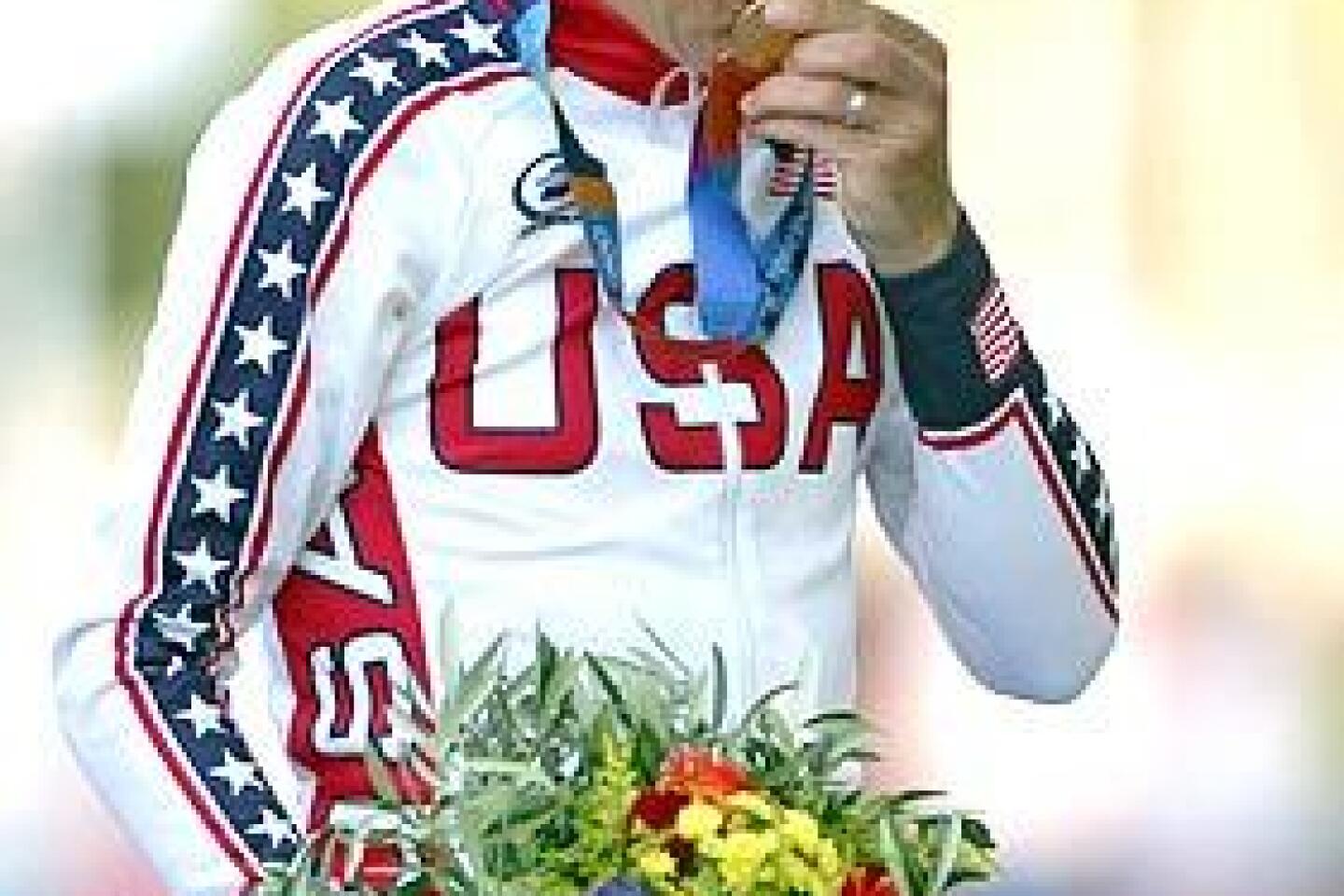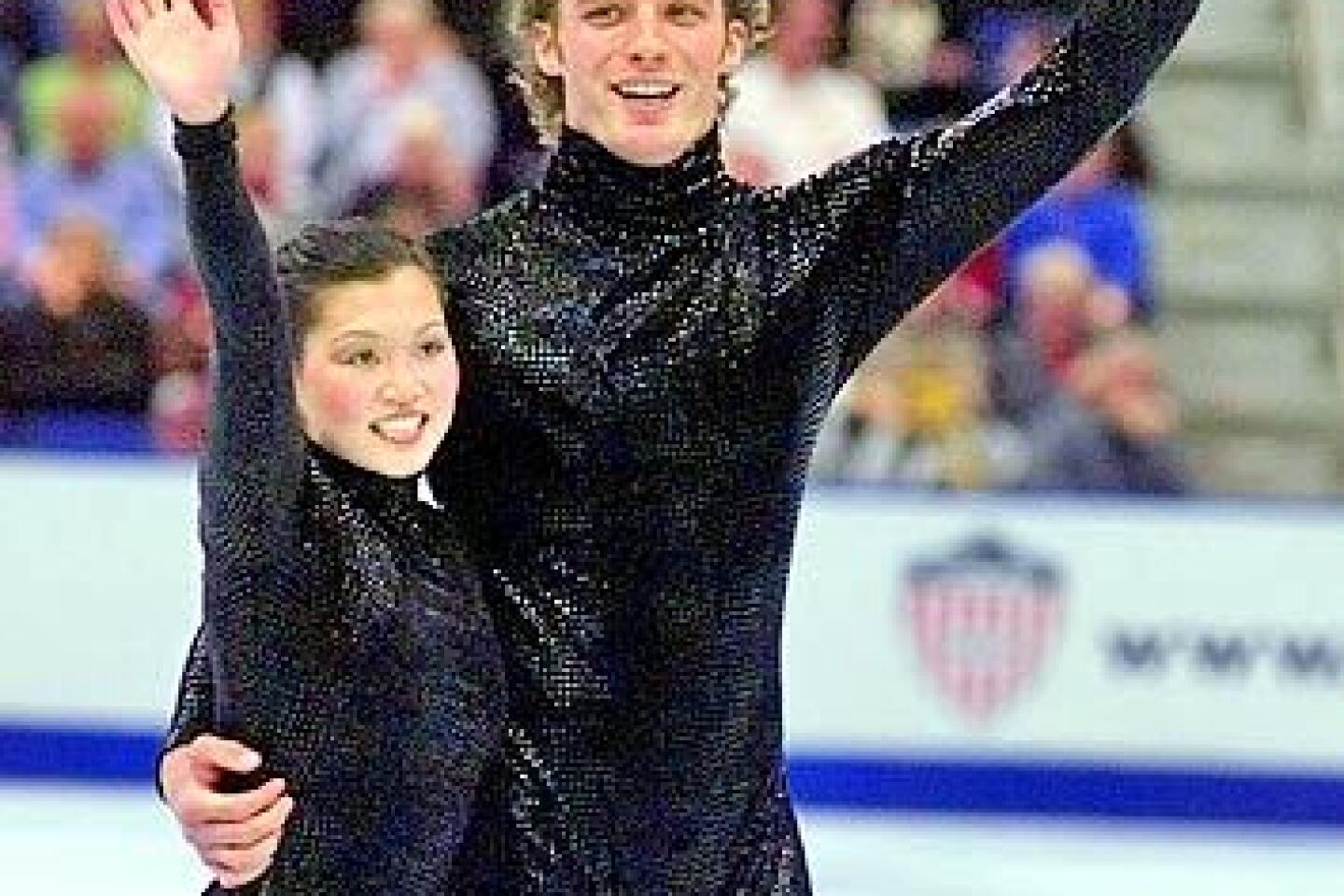Athletes’ unbeatable foe
First of two parts
The worldwide sports anti-doping program, created to fight performance-enhancing drug use in international athletics, imposes severe punishments for accidental or technical infractions, relies at times on disputed scientific evidence and resists outside scrutiny, a Times investigation has found.
Elite athletes have been barred from the Olympics, forced to relinquish medals, titles or prize money and confronted with potentially career-ending suspensions after testing positive for a banned substance at such low concentrations it could have no detectable effect on performance, records show.
They have been sanctioned for steroid abuse after taking legal vitamins or nutritional supplements contaminated with trace amounts of the prohibited compounds. In some cases, the tainted supplements had been provided by trusted coaches or trainers.
The findings emerge from a Times examination of more than 250 anti-doping cases involving runners, cyclists, skiers, tennis players and competitors in dozens of other sports from around the world.
Alain Baxter, 28, became the first Briton to win an Olympic medal in Alpine skiing, placing third in the slalom at the 2002 Winter Games in Salt Lake City. Two days later he tested positive for methamphetamine, a banned stimulant. He was forced to forfeit his bronze medal.
His offense? He had used a Vicks Vapor Inhaler bought in Utah to treat his chronic nasal congestion. Unlike the Vicks inhalers sold at home, the American version contained traces of a chemical structurally related to meth — though lacking its stimulative qualities.
Despite testimony from a Vicks scientist that the compounds differed, an arbitration panel hearing Baxter’s case ruled that because anti-doping authorities regarded the chemicals as related, he was guilty.
“It never crossed my mind that it would be different from the British one,” Baxter told the BBC upon returning home. “I didn’t think I was doing anything wrong.”
A 17-year-old Italian swimmer treating a foot infection with an antibiotic cream her mother bought over the counter failed a doping test at a swim meet in 2004. Neither Giorgia Squizzato nor her mother realized that the cream’s ingredients included a prohibited steroid — or that applying it between her toes could result in a positive urine test.
Arbitrators in her case acknowledged that “the cream did not enhance the athlete’s capacity” and hadn’t “favored her performance.”
Nevertheless, according to the anti-doping program’s zero-tolerance, or “strict liability,” policy, which treats an athlete as guilty regardless of how a substance got into his or her body, Squizzato was judged negligent. Her penalty: a one-year suspension.
Stringent anti-doping measures have become a fact of life for the thousands of athletes participating in national and international events since the creation of the World Anti-Doping Agency, or WADA, at an international sports conference in 1999. WADA’s founding was prompted by a rash of doping scandals threatening the credibility of global sports.
What has evolved to protect competitive purity since then is a closed, quasi-judicial system without American-style checks and balances. Anti-doping authorities act as prosecutors, judge and jury, enforcing rules that they have written, punishing violations based on sometimes questionable scientific tests that they develop and certify themselves, while barring virtually all outside appeals or challenges.
WADA’s authority stems from the World Anti-Doping Code, which has been adopted by 186 governments, including the United States, and hundreds of Olympic and international athletic organizations. Under its provisions, athletes competing in sanctioned events are subject to mandatory urine and blood testing at any competition.
Athletes also must submit to unannounced random tests and provide authorities with detailed calendars showing where they can be found at any time, even on vacation.
A test sample is typically divided into two vials, labeled “A” and “B.” The “A” sample is the first to be tested. If it comes up positive for a banned substance, the athlete may demand a confirmation test of the “B” sample. If that is also positive, the code allows the agency to declare the athlete in violation of doping rules and impose a penalty ranging from a public warning to a lifetime ban. Generally, the athlete also is disqualified from the event at which the violation allegedly occurred.
An accused athlete’s only recourse in the face of a doping charge is arbitration, under rules of evidence dictated by WADA and designed to give the authorities the benefit of all doubt.
In many countries, including the United States, athletes have no right to appeal an adverse arbitration ruling to the courts. In the vast majority of cases, including every case heard in the U.S., the arbitrators have upheld the violation.
Tests for banned substances may be performed only at one of the 34 labs around the world accredited by WADA. Athletes are not permitted to have their samples tested at any lab outside the agency’s system. The rules also prohibit WADA labs from doing any tests in defense of an accused athlete.
WADA Chairman Richard W. Pound, 64, a Montreal lawyer, argues that the program must be so stringent and uncompromising to be effective against doping, which he calls “the biggest threat to sports.”
“The less discretion there is in the finding of a doping offense, the better it is,” he told The Times in an interview.
Pound, a former competitive swimmer who finished just out of medal contention at the 1960 Summer Olympics in Rome, dismissed the notion that a significant number of doping cases are accidental or inadvertent; WADA policy states that every athlete is responsible for everything he or she ingests or applies to the body. In the case of adulterated supplements, he said, “If you didn’t know what was in there, it’s your own damn fault.” In the rare cases that an athlete can be proved truly faultless, he added, the system is flexible enough to temper its penalties.
“If you’re captured by a squad of Nazi frogmen and injected with a steroid, you’re going to be found positive,” he told The Times. “But it wouldn’t be a two-year suspension.”
The effect of a doping allegation on an athlete’s life is immediate and crushing.
“For people who have never had to deal with something like this, it’s hard to grasp what it takes away from you,” says Rachael Burke, 23, a swimmer at the University of Virginia, whose urine sample turned up in May 2004 with a trace of boldione, an obscure steroid, possibly from a contaminated nutritional drink. Burke had never had a positive result in any other test in more than a decade of competitive swimming.
“You have no idea what happened,” she recalled in an interview. “You have no control over the fact that they are going to announce to the entire public that Rachael Burke, this girl that everyone has seen grow up in the spotlight, has tested positive for steroids. The next day, you have to walk on the pool deck and people are saying, ‘I wonder if that’s why you were so good when you were 8 years old.’ You’re accused and convicted without a chance to defend yourself.”
Concerned that fighting the charge would cost her family tens of thousands of dollars in legal and professional fees and that the arbitration rules were stacked against her, she eventually agreed to a two-year suspension. The sanction knocked her out of international competition, but preserved her right to swim in NCAA events.
Cases like Burke’s undermine the program’s credibility, says John Ruger, a former Olympic biathlon competitor who serves as athletes’ ombudsman of the United States Olympic Committee in Colorado Springs.
He asserted that the anti-doping system sweeps up “two, three, five people every year who are not intentionally cheating.”
Ruger added: “If the anti-doping program is to succeed worldwide, athletes have to believe it’s a fair process.”
Travis T. Tygart, general counsel of the U.S. Anti-Doping Agency (USADA), WADA’s largest national affiliate, disagrees with Ruger’s figures. He said the agency goes to great lengths to ensure that only the guilty are punished. He said about 20% of all its potential cases are tossed out, leaving only those USADA regards as irrefutable.
“We’re not in this to falsely accuse,” Tygart said.
He and other anti-doping officials maintain that underground efforts to cheat with new “designer drugs” are a continuing problem, an allegation reinforced by revelations in the Bay Area Laboratory Co-Operative, or BALCO, case.
The lab allegedly provided dozens of professional and amateur athletes with undetectable performance-enhancing treatments. Through 2004, USADA said, 13 athletes had been sanctioned under WADA rules based on testimony and evidence in the BALCO case, including some who never tested positive for any steroid.
Yet the international anti-doping program’s own statistics cast some doubt on the concerns expressed by Pound and other officials about a sports world awash in drugs. Of USADA’s thousands of tests per year, fewer than 0.5% have produced sanctions. Many of those were for prescription medications or substances with little or no performance-enhancing effect.In 2005, for example, USADA conducted 8,175 tests and imposed sanctions on 20 athletes. Its testing program consumed $5.6 million that year, or 47% of a $12-million budget funded primarily by Congress.Today the program is facing unprecedented controversy, the result of several high-profile cases.
One involves American sprinter Marion Jones, accused of failing an initial doping test last summer. She immediately rushed home from an international track meet in Switzerland. When her second “B” sample came up negative, the case against her appeared to collapse.
The case remains open, however. Pound has infuriated Jones’ supporters by suggesting the negative second test may have been flawed. He told BBC radio he was worried “that someone is misinterpreting things or doing things wrong.”
In another simmering controversy, California cyclist Floyd Landis, the 2006 Tour de France champion, is appealing USADA’s charge that he doped with testosterone during the July endurance race. He denies taking any performance-enhancing drug and is demanding a public arbitration hearing.
Landis also has posted online (at https://www.floydlandis.com ) the laboratory evidence against him, giving the public a rare inside glimpse of a doping dispute and the science behind it.
The records show, for example, careless bookkeeping errors. Samples attributed to Landis were recorded under several incorrect serial numbers. Also, results from multiple tests on the same samples, all by the same Paris lab, produced markedly inconsistent results.
The Landis camp contends the documents prove he is innocent. “There is no basis for a positive test,” says Arnie Baker, a San Diego physician and cycling coach. He is consulting for the Landis defense. “How it got this far in the first place, I have no idea.”
‘A closed system’
Nestled among industrial shops on a short block in West Los Angeles, just across from a Bed Bath & Beyond, is the world’s preeminent sports anti-doping laboratory.The nondescript three-story UCLA Olympic Laboratory is the domain of Don H. Catlin, a professor of molecular and medical pharmacology at UCLA Medical School who has made the fight against sports doping his life’s work.
Holding contracts not only with WADA but with the National Collegiate Athletic Assn. and the National Football League, the UCLA lab performs nearly four times as many blood and urine tests as the global runner-up, in Cologne, Germany. Its work is commonly considered the gold standard of sports doping science.
For all his expertise, however, Catlin is forbidden by WADA rules from testifying in defense of an athlete in a doping case. He and the lab’s more than 40 employees are prevented by WADA rules from engaging in “testing or expert testimony that would call into question the scientific validity of work performed in the anti-doping program.”
Despite WADA’s claims of “public transparency and accountability,” it operates largely as a hermetically sealed scientific community with minimal public oversight.
WADA pays labs, usually one of those in its network, to develop tests for banned substances. It then is the sole arbiter of the test’s scientific validity.
WADA determines threshold levels at which traces of a substance are deemed a violation.
And under WADA rules, the same lab that performs a positive test on an “A” sample also must conduct the confirming test on the “B” sample.
“You have a closed system where very few people in the world know what the science is, and the system has a vested interest to make sure its findings are confirmed,” says David L. Black, president and chief executive of Nashville-based Aegis Sciences Corp., a large independent doping lab unaffiliated with WADA.
“The lab should just be a fact-gatherer, but the WADA system is designed in a way that the labs are not just objective fact gatherers, but part of the body of prosecution,” Black said.
The EPO riddle
No test in WADA’s arsenal has drawn as much fire as its assay for synthetic erythropoietin, or EPO — a hormone that increases stamina.EPO doping has been banned since the 1990s, when the synthetic version began to be used by athletes to improve their stamina. A urine test to identify artificial EPO was introduced in 2000 and has been refined several times since.
It is not a simple test. It can require 36 hours, scores of laboratory steps, sophisticated machinery and a high level of technical skills.
Unlike tests that produce empirical measurements or unmistakable indicators, such as litmus paper, the EPO test involves a significant level of interpretation. Because natural and synthetic EPO produce similar readings in the lab, even experienced technicians viewing the same results can differ in their conclusions.
Results also can be clouded by other natural substances in the sample or by poor lab technique.
“It’s a more difficult test than others in that it doesn’t give you a fingerprint,” Catlin acknowledged in an interview, saying “the EPO test needs more work.” However, he also called it “safe and defensible — we would not practice it if it were not.”
Yet Catlin’s lab produced perhaps the most conspicuous contradictory finding in an EPO test, leading to the apparent collapse of the doping case against sprinter Jones. The UCLA lab’s test on her “B” urine sample failed to confirm its own positive finding on her “A” sample.
Catlin says the case represents the first such mismatch in an EPO test by his lab. He declined to discuss it further, because the matter is under investigation by WADA.
But Allen K. Murray, an Irvine biochemist who witnessed the confirmation test on Jones’ behalf, says her “A” sample should never have been declared positive in the first place.
“I have very serious questions about the ‘A’ result,” he said, arguing that the quantity of the sample in the “A” test was too low to give a clear reading and that the lab interpreted the relatively faint image too aggressively.
At worst, he said, the initial test should have been declared inconclusive.
Jones’s case was not the first flub involving an EPO test.
In 2003, Kenyan distance runner Bernard Lagat was charged with EPO doping after a race in Switzerland. The charge was dropped when his “B” sample proved negative.
Evidence uncovered by Lagat’s defense team revealed his sample had been grossly mishandled — transported for hours in a car at temperatures sometimes exceeding 100 degrees, then inadequately cooled at WADA’s Cologne lab. His experts testified that those conditions promoted chemical reactions in his urine sample that could have produced a false positive result.
They cited numerous other shortcomings in the EPO test that they say rendered it prone to false positives.
Lagat, who had been suspended by Kenyan sports authorities and barred from the world track championships after the initial finding, was reinstated in time for the 2004 Olympics, where he won the silver medal in the 1,500-meters event.
But with his lawyers contending that Lagat’s “reputation will be tarnished by the doping suspicion for the rest of his life,” he sued WADA and international track authorities in a German court. He demanded about $650,000, the value of potential prize money and sponsorship contracts he said he lost during his suspension.
The German court ruled that it did not have jurisdiction in the case.
Meanwhile, after Belgian triathlete Rutger Beke was charged with EPO doping during a 2004 race, scientists from a Belgian university tested the hypothesis that under certain conditions, intense exercise by some athletes could produce a positive EPO test in the absence of doping.
The test was instrumental in persuading a Belgian court to nullify Beke’s doping charge, one of the rare cases in which WADA’s science was tested in court — not its own arbitration regime.
It remains the rarest of WADA cases: overturned.
Nandrolone cases surge
Beginning in the late 1990s, anti-doping authorities saw a surge in positive tests for substances related to the powerful steroid nandrolone, a phenomenon that would pose a special challenge for WADA’s program.The reason was that WADA’s own scientists knew that many cases were unintentional. Athletes, like the general public, were unaware that nutritional supplement makers were selling products contaminated with traces of nandrolone and other banned substances.
A statistical surge in nandrolone cases “allowed the testing program to puff out its chest and say, ‘Look at how much we’re doing,’ ” said Charles Yesalis, professor emeritus of health policy and administration at Penn State University and a leading expert on drug abuse in sports.
Studies performed by UCLA’s Catlin and by researchers at the Cologne lab, then under the International Olympic Committee, showed in 2000 and 2002 that a wide range of nutritional supplements commonly taken by elite athletes were contaminated with nandrolone and other steroids.
Catlin’s research, furthermore, made clear that it was not difficult for tests to distinguish a contamination victim from a cheater. His paper noted that an athlete taking nandrolone in a determined effort to cheat would show levels higher than 100,000 nanograms per milliliter, or parts per billion, of urine.
WADA’s threshold for a doping violation, however, had been set in single digits: 2 parts per billion for men and 5 for women. It remains at that level today.
And anti-doping officials have continued to bring cases against athletes for positive tests almost certainly derived from contamination or for steroid levels that could not possibly have any performance-enhancing effect.
Irvine swimmer Kicker Vencill, for example, proved through lab tests in 2003 that the supplements he had taken were contaminated, causing his violation. He later sued the supplement maker in state court and won a $578,635 judgment.
Vencill appealed his suspension from international competition, but arbitrators concluded that the unwitting contamination of his multivitamins by the manufacturer did not relieve him of liability for consuming any banned substances.
“The evidence shows that the presence of a prohibited substance in the athlete’s urine was caused by his ingestion of a prohibited substance — whether in a vitamin, a supplement or otherwise — for which the athlete bears complete responsibility.”
The arbitrators upheld his two-year suspension, agreeing with USADA that he should receive the maximum penalty, “just as in any case of ‘intentional doping.’ ”
“In their opening and closing statements, USADA said they were going to prove me a cheater,” said Vencill, recalling his arbitration hearings. “It’s a war in there, and you’re fighting for your character and your integrity.”
Anti-doping officials are unapologetic about the nandrolone cases and officially skeptical of explanations of innocence.
“You’ve got to hear these things over and over again to understand what a mantra it is,” Pound scoffed in an interview. “You’ve got to say, ‘Come on. Get over it. You’re filled with nandrolone.’ ”
But there also are hints of internal disagreement. One of the program’s arbitrators agreed with an accused athlete that she had ingested trace amounts of nandrolone unintentionally in adulterated vitamins.
American cyclist Amber Neben had tested positive for a concentration of 6.9 parts per billion of the steroid after a Montreal race, 1.9 over the limit for women — but vastly short of any potential performance-enhancing effect.
Arbitrator Christopher L. Campbell favored imposing no penalty, arguing that the fight against doping should not harm “innocent victims of a poorly regulated vitamin supplement industry.”
Campbell was outvoted. By a 2-1 margin, the arbitration panel suspended Neben for six months.
michael.hiltzik@latimes.com
---(INFOBOX BELOW)
Who’s in, who’s not
Signatories to the World Anti-Doping Code include the Olympic movement and 78 international sports governing bodies. Here is a partial list of athletic organizations and events subject to the code’s regulations, along with some notable exceptions.
Covered by WADA rules
All Olympic eventsAll Paralympic events
Commonwealth Games
World Cup*
Tennis Grand Slam events:
Wimbledon, French Open,
Australian Open, U.S. Open
Davis Cup
Tour de France
U.S. Tennis Assn.*
International Assn. of Athletics Federations (track & field)
International Basketball
Federation
International Gymnastics
Federation
International Hockey
Federation
International Triathlon Union
International Swimming
Federation
International Table Tennis
Federation
World Taekwondo Federation
World Bridge Federation
International Chess Federation
* Subject to their own anti-doping rules
Not covered
Major League Baseball*National Football League*
National Basketball Assn.*
National Hockey League*
Major League Soccer*
National Collegiate
Athletic Assn.*
Professional Golfers Assn.
Ladies Professional Golf Assn.**
U.S. Golf Assn. (U.S. Open)
British Open (golf)
* Maintain separate anti-doping programs
** Will begin drug testing program in 2008
---
(INFOBOX BELOW)
What’s banned?
Substances banned by WADA include:
Anabolic steroids
Effects: builds strength,facilitates training
Examples: stanozolol,
testosterone
Hormones
Effects: improves red bloodcell count, stamina, training
effectiveness
Examples: erythropoietin (EPO), human growth hormone
Stimulants
Effects: combats fatigue,improves reaction time
Examples: adrenaline,
methamphetamine
Masking agents
Effect: conceals presence of steroids in urineExamples
: diuretics, epitestosteroneSource: World Anti-Doping Agency
---About this series
Two articles about the world sports anti-doping system.
Today: Innocent athletes often pay a steep price.
Monday: Appeals are costly and usually fruitless.
On the Web
To see source documents and a gallery of photos, go tolatimes.com/doping.
More to Read
Start your day right
Sign up for Essential California for news, features and recommendations from the L.A. Times and beyond in your inbox six days a week.
You may occasionally receive promotional content from the Los Angeles Times.
